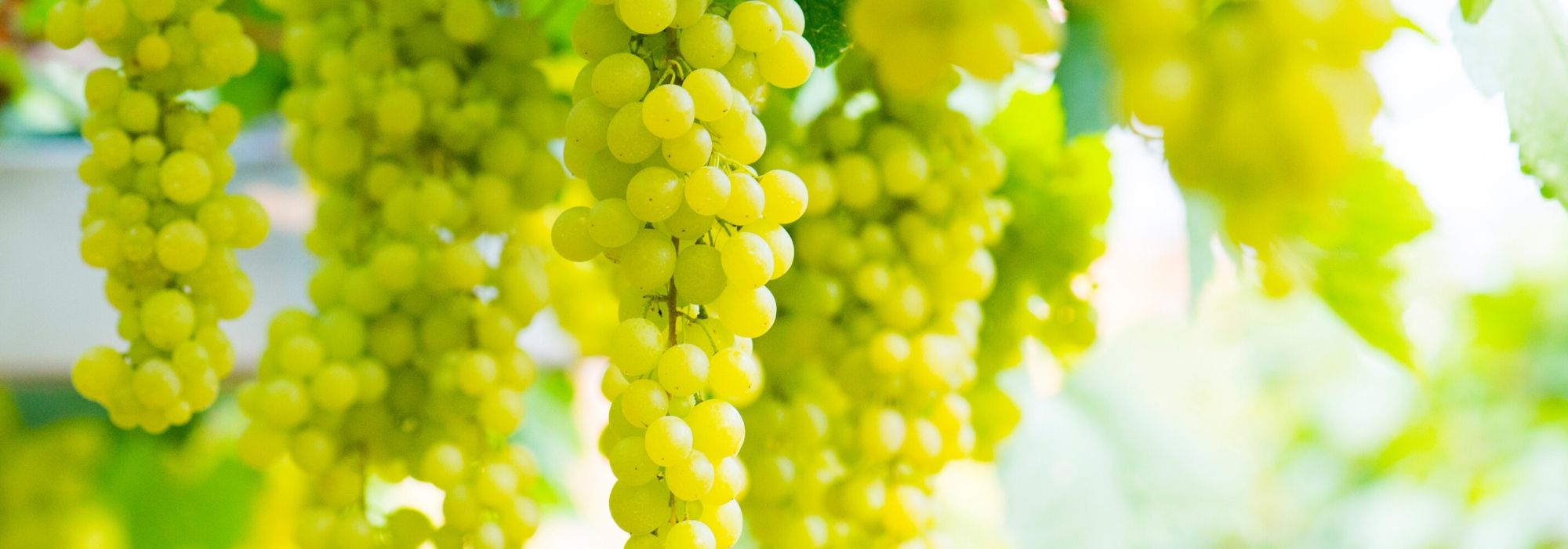
Grapevine: planting, cultivation, pruning
Contents
Grapevine in a nutshell
- Vine (Vitis vinifera) is a climbing, sarmentous bush producing large clusters of sweet, juicy berries called grapes
- Grapes intended for winemaking are distinguished from table grapes
- New vine varieties are very resistant to fungal diseases and well suited to amateur gardens
- Hardy, it prefers gravelly, well-drained soils in a sunny position
- Ornamental and fruit-bearing, with its nodose trunk, Vine will clothe trellises, walls and pergolas from summer to autumn, when its foliage turns fiery
A word from our expert
Grapevine (Vitis vinifera) is a climbing, sarmentous bush with a pretty nodose trunk cultivated since time immemorial for its fruits, grapes, with fleshy, juicy and sweet pulp.
Its emblematic leaves, blazing in autumn, make it as ornamental as fruit-bearing, dressing trellises and pergolas harmoniously. Cultivation of grapevine is within reach of amateur gardeners. Hardy, it can be planted throughout France in sun, in well-drained soil.
Possessing fairly rapid growth, it has exceptional longevity; a vine-plant can live for several centuries, especially as new varieties (Ampelia® vines) prove more resistant to diseases.
Wine grape or table grape, white, black or pink grapes — choose from our beautiful collection of grape varieties!
From planting to pruning of the grapevine, here are all the secrets to grow this liana with strong character and harvest your grapes like a skilled harvester!
Description and botany
Botanical data
- Latin name Vitis vinifera
- Family Vitaceae
- Common name Grapevine
- Flowering March to May
- Height 1.50 to 10 m
- Exposure Sun
- Soil type clay-limestone
- Hardiness -20°C
The grapevine for wine or table grapes (Vitis vinifera) is a sarmentous, climbing shrub grown for its edible fruit, belonging to family Vitaceae, like ornamental vines (Virginia creeper Parthenocissus, Vitis coignetiae or “Coignet’s vine”). Cultivated since Antiquity in warm regions of Europe, the Middle East and North America where it grew wild more than 7,000 years ago, it was introduced to France by the Romans around 600 BC.
Many cultivars are derived from Vitis vinifera (cultivars are called grape varieties). Distinction is made between wine grape varieties, more or less early and intended for winemaking (Merlot, Cabernet Sauvignon, Riesling…) and table grape varieties (Chasselas doré, Muscat of Hamburg, Ampelia® range) used to produce table grapes. Numerous hybrids, less susceptible to disease and seedless, have been developed to offer a range of colours, flavours and uses.
This vigorous climbing liana produces long, sarmentous and voluble shoots called sarments. They coil around supports using tendrils or shoots. On a deep root (which can descend to 5 metres in the soil), it forms a vine-plant or trunk, attractively gnarled, branching into several sarments. Bark peels in strips over time. Mature, it will easily reach 6–7 m in height or spread. A grapevine can live for centuries!
Grapevine offers very decorative deciduous foliage in spring and takes on beautiful autumn colours.
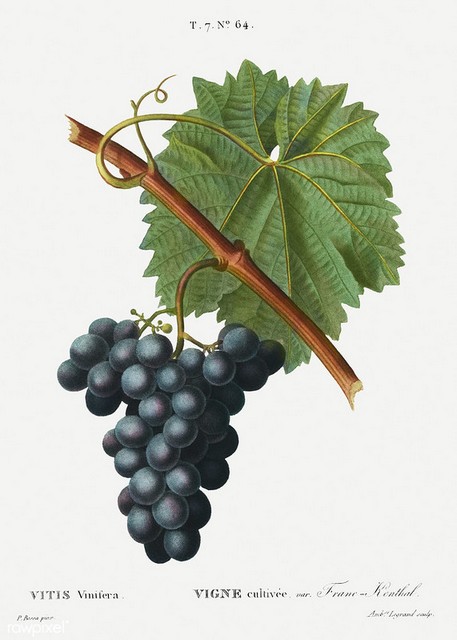
Vitis vinifera – botanical illustration by P.J. Redouté
Shoots bear large alternate, petiolate leaves, 6 to 20 cm long, composed of 3 to 7 palmate leaflets, cordate at the base and more or less dentate at the margin. Underside may be pubescent. Through the seasons, from bud burst period to leaf fall, foliage changes from pale or medium green at emergence to golden yellow, orange, purplish-red or scarlet in autumn before falling.
The inconspicuous flowering, opposite the leaves, appears in May–June depending on climate, producing thyrsi 10–12 cm long, fairly loose, made up of very small flowers. They have 4–5 whitish-green or pinkish-white petals and 5 protruding stamens.
From August to October depending on earliness, these insignificant flowers develop into edible berries, coloured grapes with skins blue-black, amber yellow, pinkish-red to dark red, sometimes violet or greenish-white to yellow-green. Attached individually to the rachis and borne on secondary branches called pedicels, the berries form small elongated, pyramidal clusters.
These berries, covered with white bloom, are round to ovoid or elliptical and contain 4 seeds, the pips. Vigne Philipp is an original variety distinguished by oddly pear-shaped grapes, resembling small pears.
Juicy pulp conceals an aromatic flavour, more or less sweet depending on variety, with notes of blackcurrant, tobacco, cherry, green pepper, vanilla, violet, dark chocolate, sweet spices, fern, smoke, plum, liquorice, undergrowth or even wild strawberry in Fragola vines.
Depending on variety, grapes are eaten as table fruit, fresh, or of course used to make wine or spirits after winemaking.
Very hardy, down to about -20°C, the grapevine can be grown throughout France in sunny, warm situations. Undemanding about soil and fairly frugal, it should be planted in well-drained, deep soil, even poor, dry and calcareous.
Main species and varieties
Around 75 vine species exist, including Vitis vinifera, the most widely cultivated species. It has given rise to thousands of cultivars or grape varieties. Rootstocks and hybrids of the genus Vitis are also included. We distinguish between wine grape varieties intended for winemaking and table grape varieties. In our nursery you will find a wide selection of grapes from both old and recent varieties, ranging from early to late ripening, ideal as table grapes or, for others, after vinification for winemaking. Some varieties, such as Muscats, are used to make white wine but can also be eaten fresh.
For help choosing, see this article: “Grapevine: choose the right variety“

Vitis vinifera Chasselas Doré - Grape vine
- Flowering time June, July
- Height at maturity 4 m
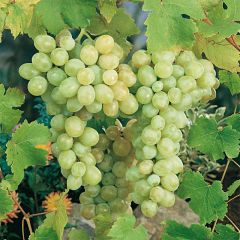
Vitis vinifera Italia - Grape vine
- Flowering time June, July
- Height at maturity 5 m
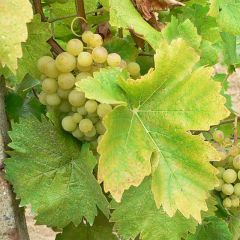
Vitis vinifera Perle de Csaba - Grape Vine
- Flowering time May, June
- Height at maturity 5 m
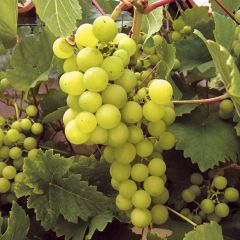
Vitis vinifera Ampelia Perdin - Grape vine
- Flowering time May
- Height at maturity 4 m
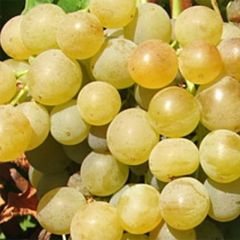
Vitis vinifera Ampelia Candin - Grape vine
- Flowering time June
- Height at maturity 5 m

Vitis vinifera Muscat de Hambourg - Grape vine
- Flowering time April
- Height at maturity 7 m

Vitis vinifera Boskoop Glory - Grape vine
- Flowering time June, July
- Height at maturity 7 m

Vitis vinifera Cabernet Sauvignon - Grape vine
- Flowering time June, July
- Height at maturity 5 m
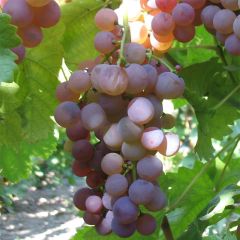
Vitis vinifera Rose Chasselas - Grape vine
- Flowering time June, July
- Height at maturity 4 m
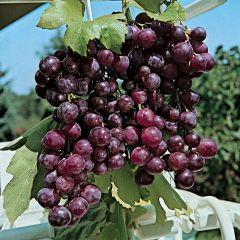
Vitis vinifera Cardinal - Grape vine
- Flowering time June
- Height at maturity 5 m
We also offer an astonishing collection of original vines, some of which are registered in the Official Catalogue of ornamental vine varieties. These fabulous varieties produce clusters of fruits with surprisingly distinctive flavours or shapes.
Discover the Fragola Nera vine, also known as the strawberry vine, notable for its grapes with a very pronounced wild strawberry flavour! For more on the Fragola vine, read Michaël’s article!
Vigne Philipp, a recent French variety introduced to the market in 2010, is also worth discovering for its curious, very sweet black berries, whose shape somewhat resembles Lucques olives.
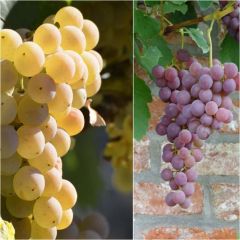
Collection of 2 strawberry grape vines
- Flowering time June, July
- Height at maturity 5 m

Vitis Fragola Nera - Strawberry vine
- Flowering time June, July
- Height at maturity 5 m
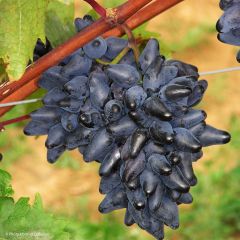
Vitis vinifera Philipp - Grape Vine
- Flowering time May, June
- Height at maturity 4 m
Discover other Grapevines
View all →Available in 1 sizes
Available in 1 sizes
Available in 1 sizes
Available in 1 sizes
Available in 1 sizes
Available in 1 sizes
Available in 1 sizes
Available in 1 sizes
Available in 1 sizes
Available in 1 sizes
Planting
Where to plant vine-plant?
Originally from Mediterranean basin, grape vine-plant withstands winter cold often down to -20°C and can be planted in many regions.
It prefers hot, dry summers and is vulnerable to spring frosts (flower buds freeze from -2 °C): provide therefore a very sunny, warm exposure sheltered from prevailing cold winds, especially in cool areas to allow good ripening of clusters.
Vine-plant is not demanding regarding soil. It is an undemanding plant that likes well-drained soils and prefers dry, stony, calcareous clay, although it adapts to any good garden soil provided it is well draining. It only dislikes wet soils.
Vine-plant can spread over several metres and needs space and a suitably adapted support to cling to: it is necessary to train it on wires and to trellis it well.
It will be very decorative along a wall, on an arbour, at base of a pergola, in open ground or in a large container on a well-exposed terrace by installing a suitable trellis.
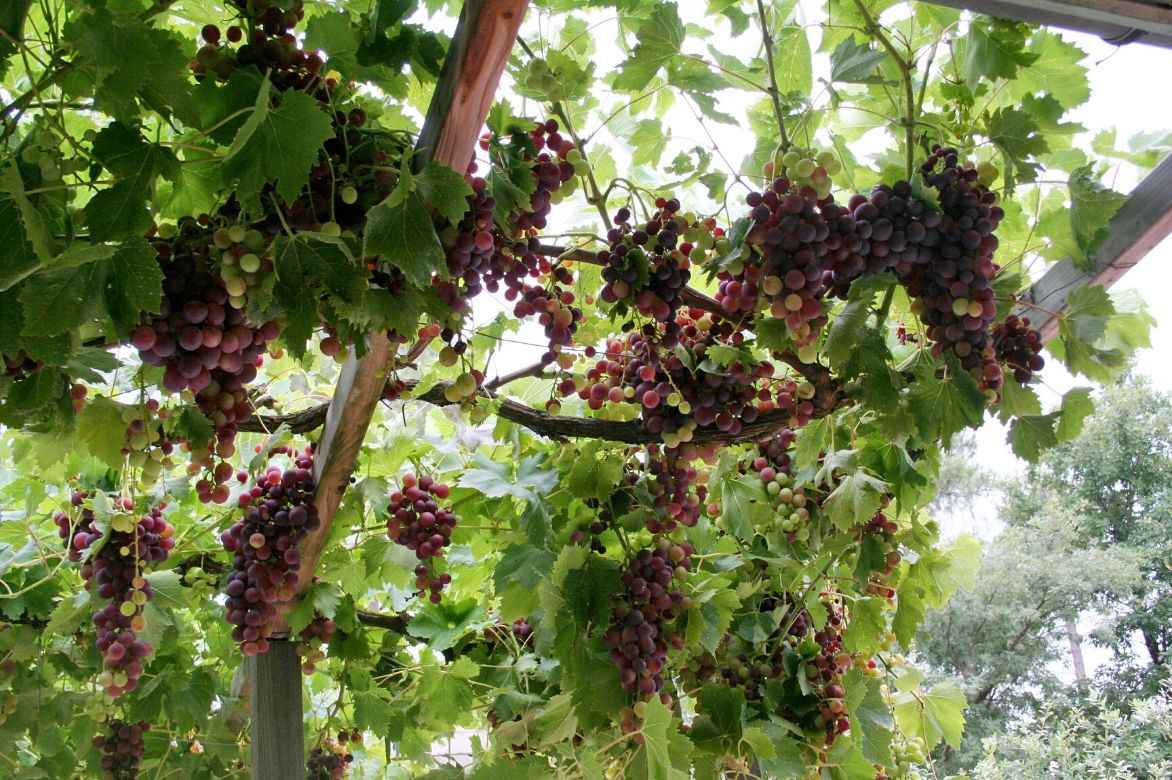
Vine-plant trained on pergola
When to plant vine-plant?
Plant grape vine-plant preferably in autumn or, if not possible, in spring, outside frost periods.
How to plant vine-plant?
Grape vine-plant needs deep, well-drained soil because its roots descend very deeply into soil. Consider planting several varieties with different ripening times to stagger harvests. Space vines 1 m apart.
- Dig a hole 40 cm in all directions
- At bottom of planting hole, spread a layer of gravel to ensure good drainage
- Add a few handfuls of fruit-tree fertiliser and well-rotted compost, mixed with garden soil
- Place young plant leaving graft union visible (plant 3 to 5 cm above soil level)
- Cover with soil, firm down
- Water
- From planting, install support (trellis against a wall, arbour, wires stretched between two stakes, wire mesh…)
- At planting, prune above two buds to encourage development of two shoots and tie most vigorous to a stake
Read also
Virgin vine: planting, care, pruningWhen and how to harvest grapes?
Well trained on a trellis in a warm spot and well pruned, grapevine will quickly provide you with juicy, sweet fruit. Grapes ripen between August (for early harvests) and October (for late varieties) depending on variety and region. They are harvested as they ripen, as needed. Once cut, grapes do not continue to ripen: cut well above the peduncle of the ripe cluster with pruning shear while supporting the cluster with your hand.
Yield depends on many factors: variety, soil type, amount of sunlight and the training system used for the vine: this will range from 5 kg to 20 kg per vine. In cold regions, avoid planting varieties that are too late-ripening, as grapes would not have time to ripen before winter arrives.
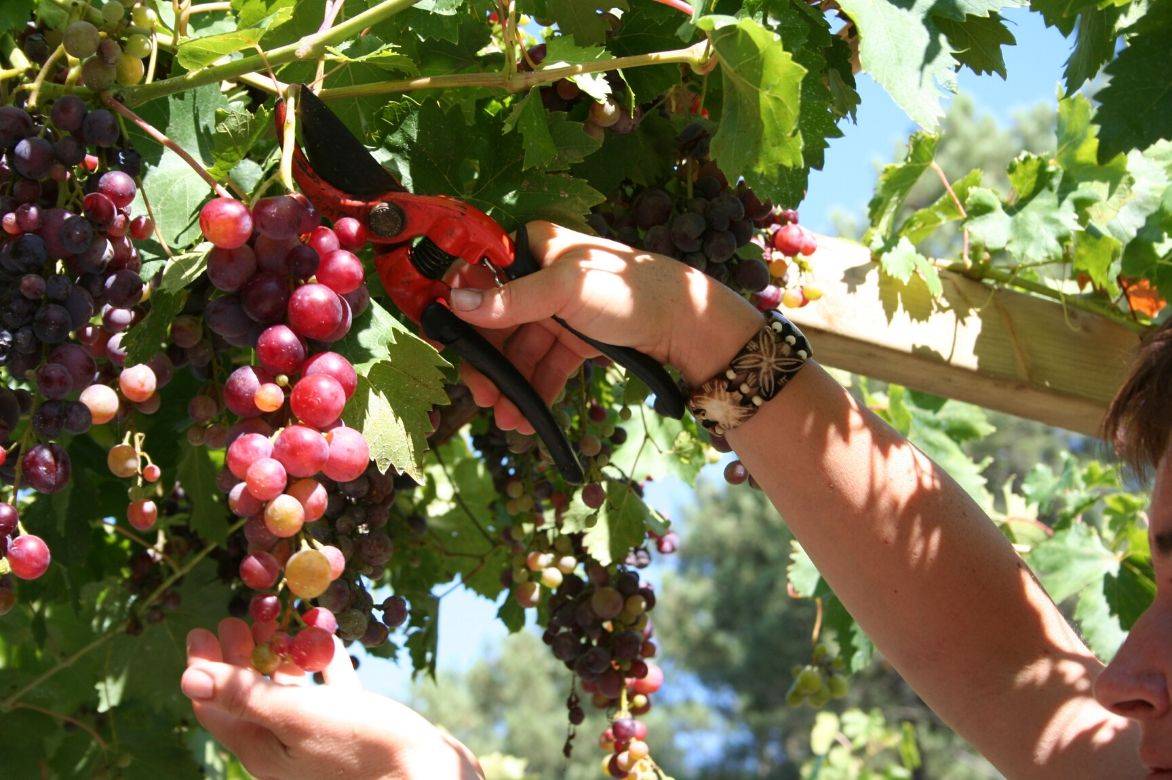
Grape harvest
How to store your grapes?
Grapes keep for five days in the vegetable drawer of the fridge; remove 30 minutes before eating to fully enjoy their flavour. To keep grapes fresh through the heart of winter, pick clusters that are petiolate and include a sufficiently long piece of branches. Immerse the end of a woody climbing stem in a container filled with water, changing the water regularly. Place in a cool location (10 to 12°C), in the dark with low humidity, and check the berries: remove any that have rotted.
Benefits and uses of grapes
Grapes are a source of vitamins and minerals. They are a particularly sweet fruit (15 to 18 g per 100 g). They are chiefly known for their diuretic properties and antioxidant powers. Regular consumption may have a positive effect on preventing cardiovascular disease. Fresh grapes are a source of vitamin B2 (riboflavin), vitamin C, B6, but also potassium, magnesium, phosphorus, fibre and tannic acid (anthocyanins).
Grapes are eaten fresh as table fruit, but also in jam, jelly, as fruit juice, in fruit salads or dried, in baking. They pair wonderfully with cheeses, endives, walnuts, cured ham, and poultry such as quail.
Grape seed oil is extracted from its pips; it is rich in unsaturated fatty acids and widely used for grilling and fondues. Fresh leaves can be used to wrap food.
They are, of course, also used to make vinegar or wine, after winemaking.
→ Discover the recipe for grape jam in Ingrid’s tutorial!
Care, pruning and maintenance of grapevines
Grapevine maintenance is important as it determines quality of grape harvest. It needs regular watering for first three years to establish roots well. Once established, it becomes drought-resistant and will not need further watering.
Mulch base of grapevine in summer to prevent weed growth.
It does not require regular fertiliser application, which would favour foliage at expense of fruit; enrich soil with horn meal or iron chelate only every 2–3 years.
Train woody climbing stems as they grow.
In summer, remove leaves that shade fruit from the sun.
Grapevine pruning
Grapevine can quickly become very invasive; pruning is essential to control vigorous growth of this liana, to ensure good grape production and to limit disease.
Vine must be pruned every year because grapes appear on lower parts of current-year shoots. Stems must be renewed each year. Pruning should be carried out at planting, then several times a year in winter and in summer. To reduce disease, avoid large pruning wounds.
Planting pruning
- Leave only first two buds: expect more vigorous shoots
- At end of following winter, before bud burst period, keep only strongest shoot, cut back to 2 buds, remove buds at base of vine-plant.
Training pruning
Simplest is to keep a fixed vertical main stem on which secondary branches will be inserted spaced 25–30 cm apart.
To obtain a two-arm cordon, select two opposite buds and train each horizontally as a cordon.
Fruiting pruning
It is carried out each year in late winter, in February–March, before growth resumes but after severe frosts. Distinguish shoots that fruited last year and the so-called replacement woody climbing stems located just below.
- Remove shoots that fruited last year
- Eliminate weak, sterile, poorly placed shoots or those too close to ground
- Shorten replacement woody climbing stems above 2nd, 3rd or 4th bud depending on variety
- Remove excess buds on young shoots
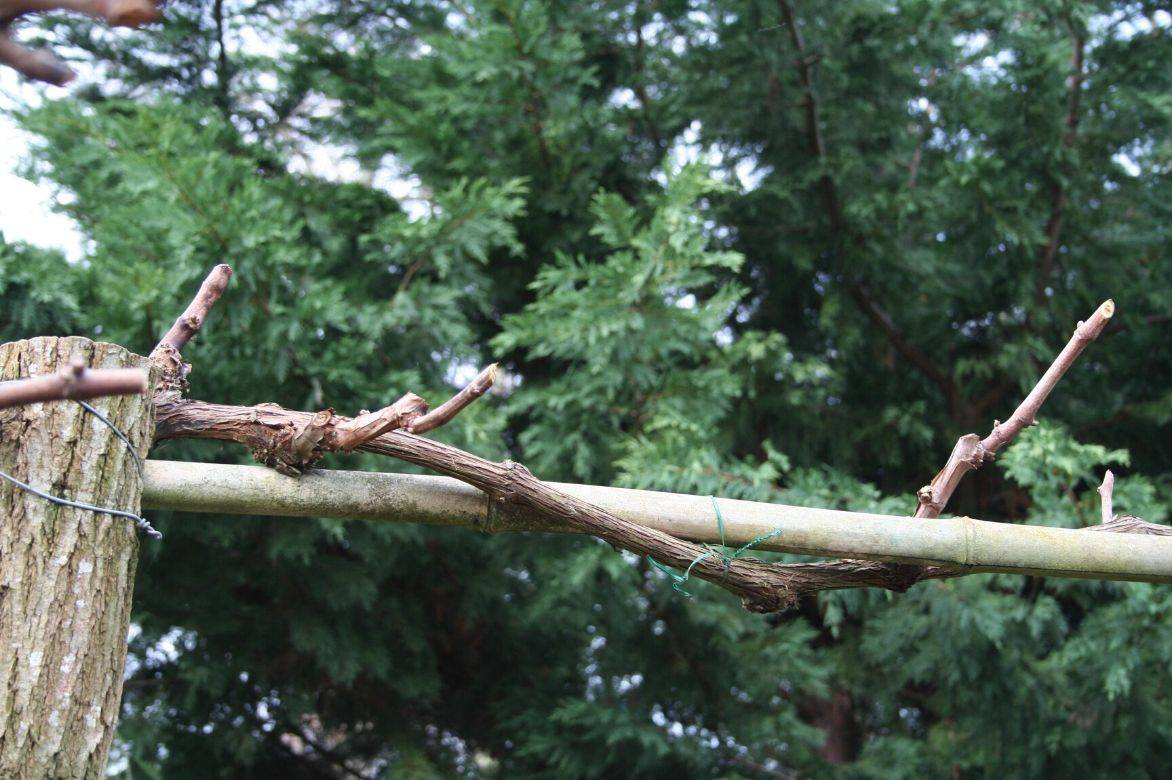
Fruiting pruning in late winter
Green pruning
This is a pruning in form of de-budding intended to improve yield; it is carried out in May–June:
- Remove “suckers” that grow in leaf axils and remove superfluous foliage along the vine-plant
- Pinch woody climbing stems two leaves beyond clusters
- Pinch shoots leaving only one leaf
- Remove smallest grape clusters
- Cut all fruitless branches to 50 cm
Restoration pruning
It is perfectly possible to rejuvenate an old vine-plant by cutting it back severely at end of winter; new shoots will reappear on old wood.
All Ingrid’s tips on grapevine pruning are on our blog !
Grapevine diseases and pests
Grapevine is unfortunately susceptible to many fungal diseases, particularly downy mildew and powdery mildew.
Against downy mildew, spray, as a preventive measure, Bordeaux mixture, sulphur or horsetail manure. Reapply if the weather is wet. Against powdery mildew, visible as a white felt on the leaves, apply sulphur sprays from flowering onwards and regularly. In any case, we recommend using products from organic farming compatible with eco-friendly gardening to obtain chemical-free grapes and choosing varieties less susceptible to disease such as Ampelia® vines, highly resistant to fungal diseases and which require few or no treatments. Since the phylloxera attack in 1863, a sap-sucking insect (a parasitic louse) that decimated French and European vineyards, rootstocks from more resistant American grape varieties have been developed.
Grey mould and bunch-rolling tortrix caterpillars are other enemies of the grapevine.
When and how to propagate grapevine by cuttings ?
Propagation by cuttings of grapevine is the simplest method for amateur gardeners.
- In March–April, cut 20 to 25 cm lengths, with two to three leaf nodes
- Remove lower leaves from base of the shoot
- Plant the cuttings, burying two-thirds of their length in a compound mix of equal parts potting compost and sand
- Keep moist until roots form
- Replant once sufficiently rooted
Useful resources
- Discover our full range of fruit bushes
- Advice sheet: Grapevine: choose the right variety
- Article: Fragola Nera grapevine, grapes with wild strawberry flavour
- Article: Why are some grape varieties banned in France?
- Advice sheet: How to take a cutting from a grapevine?
- Advice sheet: To grow a grapevine in a pot
- Advice sheet: Training a grapevine against a wall
- Advice sheet: How to prune a grapevine?
- Advice sheet: 10 hardy varieties for northern France
- Advice sheet: Grapevine disease
- Advice sheet: Why am I not getting grapes on my grapevine?
- Advice sheet: Why choose old and local grapevine varieties for your garden?
- Tutorial: How to build a grapevine trellis?
- Subscribe!
- Contents
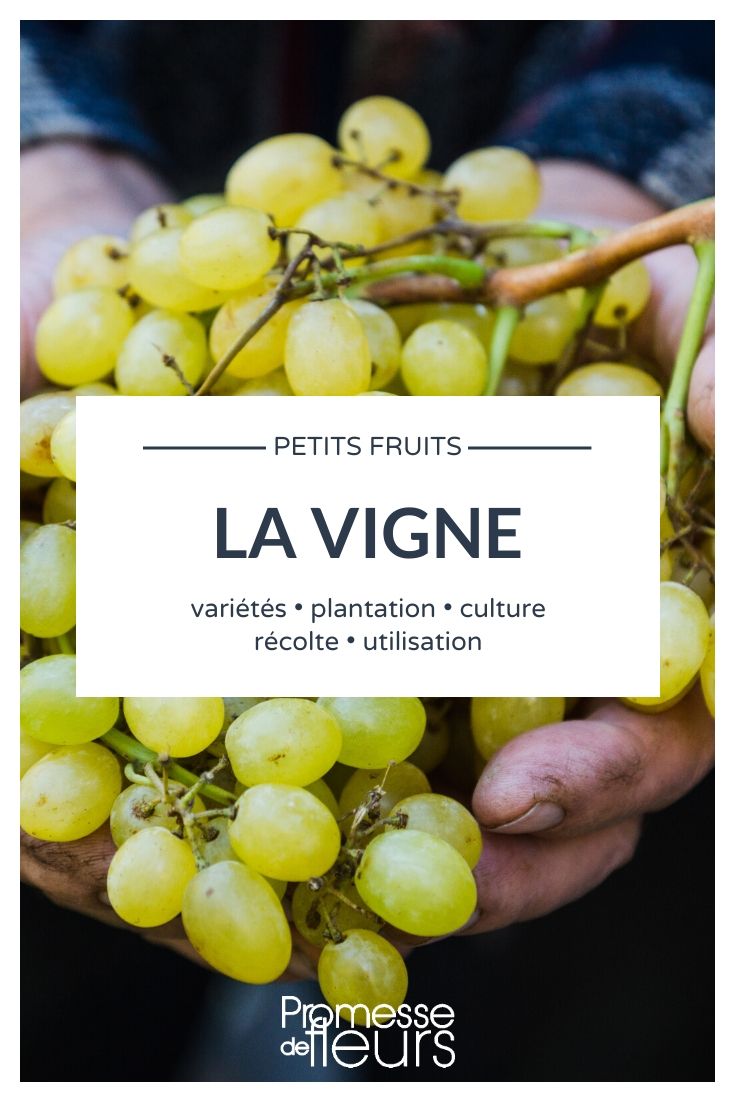































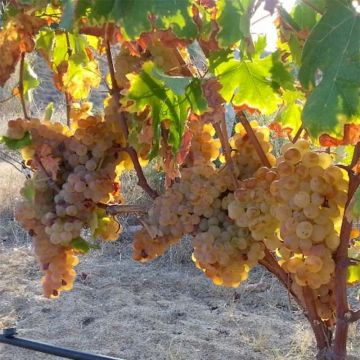
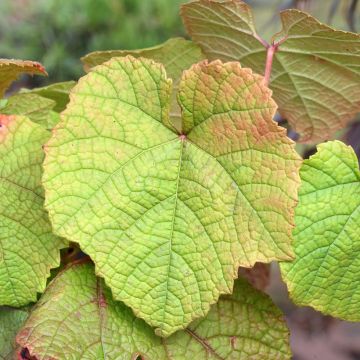

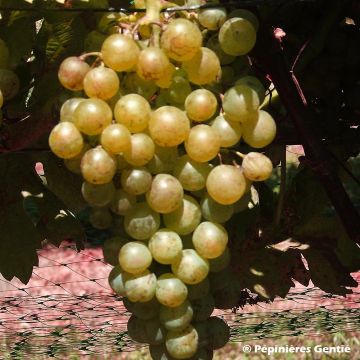
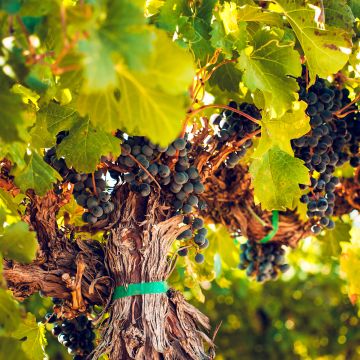
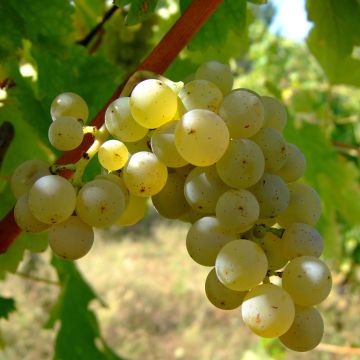

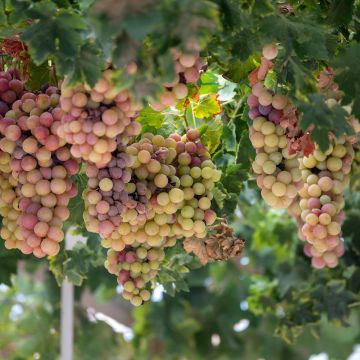
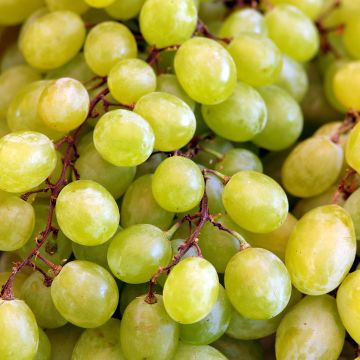

Comments